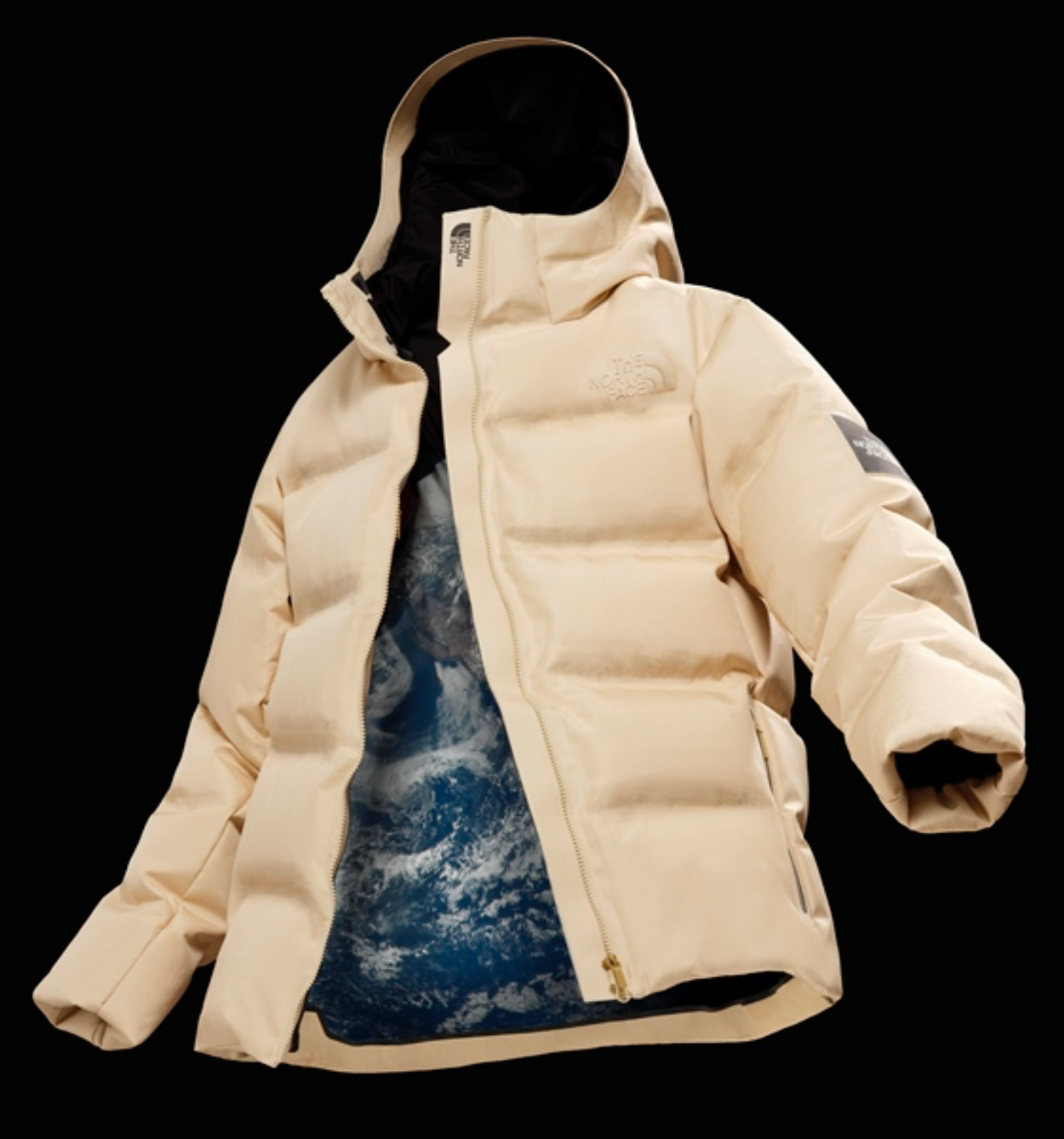Biomaterials Reshape The Future of Fashion
A Global Update (2025)
As sustainability becomes an imperative rather than an option, biomaterials are taking center stage in the global fashion industry. From fungi-derived leathers to algae-based fibers, 2025 has seen remarkable innovations and investments that mark a major shift away from petroleum-based textiles.
1. Global Surge in Biomaterial Innovation and Scale-Up
While comprehensive 2025 investment data is still forthcoming, recent developments pointed to accelerating momentum in biomaterial innovation worldwide. Startups across the U.S., Europe, and Asia advanced beyond lab-scale experimentation to industrial-scale production, particularly in mycelium-based leathers and microbial protein fibers.
In a major milestone for biofabricated materials, MycoWorks opened a 136,000-square-foot production facility in Union, South Carolina in September 2023, the world’s first commercial-scale Fine Mycelium plant, according to the company. Designed to produce millions of square feet of Reishi annually, the facility marked a major step forward in delivering MycoWorks’ proprietary mycelium-based leather alternative at scale for the luxury market.
Another leader in biomaterial innovation is Spiber Inc., a Japanese company pioneering protein-based materials created through fermentation technology rather than fossil fuels or animal sources. Their signature Brewed Protein fibers are designed to replicate the qualities of silk, wool, leather, and other textiles, but with a dramatically lower environmental footprint.
In recent years, Spiber has moved from prototypes to high-profile collaborations. One of its most iconic projects was the Moon Parka, created with The North Face Japan (Goldwin Inc.). First revealed as a concept in 2015, it became the world’s first jacket to incorporate Brewed Protein fibers. In 2023, Goldwin and Spiber announced the commercial release of the Moon Parka, marking a milestone in biomaterials history: a biotech-derived fiber that reached real-world consumers through a global outdoor brand.
The North Face Sp. “Moon Parka” — the world’s first outerwear jacket to use microbially-produced protein materials, jointly developed by Goldwin and Spiber.
Use: Microbially-produced protein materials, jointly developed by Goldwin and Spiber.
First unveiled: Prototype released in 2015, with a limited run of 50 pieces in December 2019.
Material: Outer shell made with 100% Brewed Protein™ fibers, developed through Spiber’s fermentation process using plant-derived sugars.
Design inspiration: A high-performance parka modeled after The North Face’s Himalayan Parka, featuring a waterproof/breathable laminate and 900-fill CLEANDOWN insulation.
Unique detail: The inner lining features a photograph of Earth taken during Apollo 11, symbolizing human potential and the “moonshot” nature of biomaterial innovation.
Significance: The Moon Parka became the world’s first commercially available outerwear to use structural proteins not derived from petroleum or animals, a landmark moment for biomaterials in fashion.
Photo credit: GOLDWIN Inc. press release
Most recently, in January 2025, Spiber announced a strategic partnership with Italian luxury mill Botto Giuseppe, marking the first time Brewed Protein yarn had been fully developed and marketed in Europe. After two years of collaboration, the companies unveiled both blended yarns containing 20–50% Brewed Protein with cashmere and, for the first time, a 100% Brewed Protein worsted yarn suitable for weaving and knitting applications such as suits, shirts, and jersey knitwear. The innovation debuted at Pitti Filati, Florence’s leading international trade fair for yarns and knitwear design where a polo shirt made entirely from the new fiber was showcased. This milestone signaled a critical step toward integrating biomaterials into the European luxury supply chain and highlighted their readiness for commercial adoption at scale.
2. Algae and Plant-Based Fibers Gain Ground
Algae-derived biomaterials are emerging as a frontier in sustainable fashion, with innovators worldwide exploring how seaweed and microalgae can be transformed into fibers and alternative leathers. For instance, U.S.-based Keel Labs (formerly AlgiKnit) has developed Kelsun, a next-generation cellulosic fiber made from sustainably farmed seaweed. Designed to work within existing textile supply chains, Kelsun™ offers lower resource use compared to conventional fibers and avoids reliance on fossil fuels. In 2024, Stella McCartney became the first major designer to showcase garments made with Kelsun during Paris Fashion Week, signaling the material’s readiness to enter the luxury fashion market.
Similarly, plant-based leathers continued to expand globally. Ananas Anam’s Piñatex, a non-woven textile made from pineapple leaf fibers, produced in the Philippines and certified under B Corp standards became a leading sustainable alternative to animal leather. By upcycling agricultural waste that would otherwise be burned, Piñatex not only reduced carbon emissions but also provided income for more than 1,500 farming families. Since its launch, over 2.5 million linear meters of Piñatex have been used by 3,000+ brands across footwear, accessories, apparel, and interiors. In 2025, Piñatex entered new footwear collaborations with brands such as NAE Vegan Shoes, which offered sandals, sneakers, and high-top trainers crafted with the material. These products demonstrated Piñatex’s versatility: breathable, durable, and vegan, while proving that plant-based leathers are ready for mainstream adoption.
Another pioneer in this space is Desserto, a cactus-based leather alternative developed in Mexico that was expanded from fashion into automotive interiors, furniture, and luxury accessories. Made from the resilient nopal cactus, Desserto was produced with minimal water and without pesticides, offering a durable, versatile, and lower-impact substitute for animal leather and plastics. Since its launch in 2019, the material gained international recognition, including PETA’s Approved certification and PETA’s Compassionate Business Award, which honors companies creating innovative alternatives to animal-derived materials, and Green Product Award, an international prize that recognizes innovative and sustainable products across industries. By 2025, Desserto was being used in collaborations with leading global brands across multiple sectors.
3. Europe Accelerates Biomaterial Policy Integration
The European Union’s Strategy for Sustainable and Circular Textiles, introduced in March 2022, is a comprehensive policy initiative aimed at transforming the EU’s textile sector into a more sustainable, resilient, and circular system. Developed under the European Green Deal and aligned with the EU Circular Economy Action Plan, the strategy addresses the entire lifecycle of textile products, from design and production to consumption, reuse, and end-of-life. Its primary goal is to ensure that by 2030, all textile products placed on the EU market are durable, repairable, recyclable, largely made of recycled fibers, and produced in ways that respects both social rights and environmental boundaries.
A cornerstone of this strategy is the Ecodesign for Sustainable Products Regulation (ESPR), which was proposed by the European Commission in March 2022 and entered into force in 2023. The ESPR expands ecodesign requirements beyond energy-related products to all physical goods sold in the EU, including textiles, and sets legally binding criteria focused on improving product durability, energy efficiency, reparability, recyclability, and overall environmental impact. These regulations apply across all EU member states and impact both EU-based companies and non-EU producers selling into the EU market.
One of the regulation’s most transformative tools is the introduction of Digital Product Passports (DPPs): standardized digital records that accompany products and contain essential information about material composition, origin, carbon footprint, certifications, repairability, and end-of-life instructions. DPPs are designed to enhance transparency and traceability throughout the product’s lifecycle, empowering consumers, producers, and regulators to make informed, sustainable choices.
Beginning in January 2025, textile producers must begin complying with these new ecodesign standards. However, full compliance will be phased in gradually by product category, rather than applied to all garments at once. The regulation does not immediately apply to every garment or textile product. Instead, the European Commission will introduce product-specific rules (via delegated acts), beginning with high-impact categories such as fast fashion, denim, and synthetic fiber products. These categories will be the first to require full compliance with sustainability criteria and the inclusion of DPPs. Existing inventory or product lines not yet subject to these specific delegated acts may still be legally sold until their respective compliance dates are enforced.
Over time, the ESPR will expand to cover all textile and apparel products placed on the EU market, regardless of sustainability claims, bringing all products under equal scrutiny and requiring brands to shift from voluntary eco-labeling to data-verified sustainability practices. This marks a foundational transformation toward a data-driven, circular textile economy, where environmental performance, transparency, and product design are no longer optional, but regulated standards. The policy also prioritizes the use of certified biomaterials, such as mycelium-based leathers, algae-derived fibers, and recycled inputs, that demonstrate low lifecycle impacts and biodegradability.
4. Indigenous Knowledge and Regenerative Practices
Biomaterials are not solely the domain of high-tech innovation, they are deeply rooted in indigenous textile traditions, passed down through regenerative knowledge systems that uphold ecological balance and cultural heritage. The Ethical Fashion Initiative (EFI), a flagship program of the International Trade Centre (a joint agency of the UN and WTO), empowers artisans from marginalized communities, particularly in Africa, Asia, and Latin America, by connecting their heritage crafts to international fashion markets. EFI has elevated biomaterials such as banana fiber, barkcloth, and raffia, showcasing them not only as sustainable alternatives to synthetic fabrics, but as living symbols of cultural continuity, resilience, and self-determination.
Biomaterials, when sourced through indigenous practices and supported by ethical global partnerships, represent more than environmental solutions—they embody a holistic model of circular fashion that values both ecological integrity and cultural dignity. In doing so, they offer a roadmap for decolonizing sustainability, shifting the focus from purely technological fixes to inclusive, place-based systems of fashion that honor both people and planet.
Why It Matters
According to the Ellen MacArthur Foundation, synthetic fibers, especially polyester, still account for over 60% of global clothing production. These materials are also a leading contributor to microplastic pollution, particularly through washing and landfill breakdown. As the fashion industry seeks to decouple from fossil fuels, responsibly scaled biomaterials such as banana fiber, hemp, and bacterial cellulose offer a promising path forward. By 2025, these materials are no longer niche experiments, they have become foundational to a circular fashion economy that aligns environmental performance with cultural and regional equity.





















